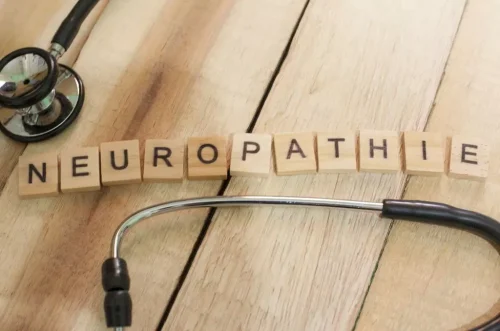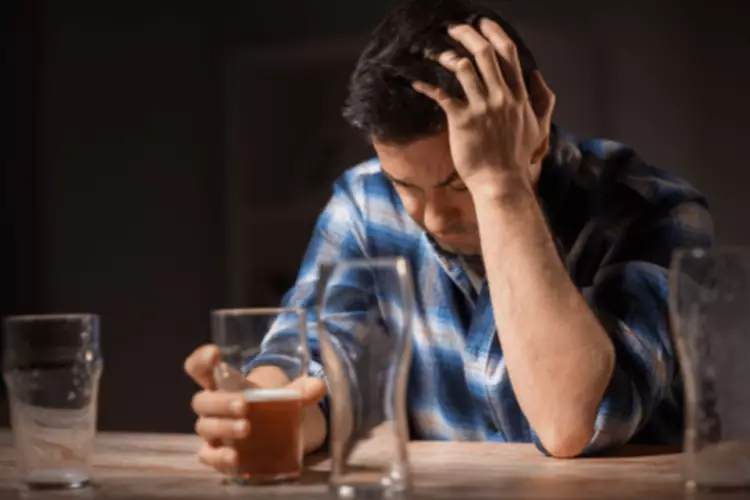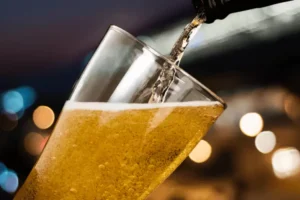
Excessive alcohol use isn’t the only thing that can cause blackouts or brownouts. Substance misuse on its own or with alcohol can increase your likelihood of experiencing a blackout. Hypnotics or sedatives and benzodiazepines like flunitrazepam (also known as Rohypnol or roofies) can also lead to blackouts or brownouts. Diabetic patients being treated for alcohol use may regularly meet with a medical doctor, nutritionist, and attend sessions with a counselor to treat all medical and mental health needs. Programs typically last 30 to 90 days but may last longer depending on the progress and needs of each patient. Drinking heavy amounts of alcohol on a regular or daily basis is a primary sign of alcohol use.

Learn more about smart insulin pen
Heavy alcohol consumption (i.e., 200 grams of pure alcohol, or approximately 16 standard drinks, per day) can cause ketoacidosis in both diabetics and nondiabetics (Wrenn et al. 1991). People who consume those high amounts of alcohol typically have been drinking and not eating for days and/or have vomited or developed other illnesses from drinking. As a result, those patients frequently have very low blood sugar levels (although some people with alcoholic ketoacidosis have very high blood sugar levels, because the lack of insulin prevents glucose uptake from the blood into the tissues). Although alcohol-related consequences helped explain the association between blackouts and symptoms of depression in this sample, the mechanism(s) linking alcohol-related consequences to symptoms of depression are unclear. Research with college students suggests that alcohol-related consequences are a stronger predictor of depression than drinking quantity (Rosenthal et al., 2018).
Liver disease
That sort of double impact can cause blood sugar levels to drop to dangerously low levels, a condition known as hypoglycemia. That’s why it’s best to talk with your healthcare provider about drinking alcohol when you have diabetes and how (or whether) you can do it safely. This means deciding what and how much you will drink, eating when you drink alcohol, carrying treatment for hypoglycemia, and monitoring your glucose levels. If you currently drink alcohol or aren’t sure if alcohol is safe for you to drink, it’s best to talk with your healthcare provider about the risks and benefits. Your provider should consider your overall health, how well your diabetes is managed, medications that you are taking, and other health issues you may have.
- Goodwin and colleagues (1969a) reported that subjects experiencing fragmentary blackouts often become aware that they are missing pieces of events only after being reminded that the events occurred.
- Responses were summed to estimate the number of drinks consumed in a typical week.
- Both the depletion of glycogen and diminished gluconeogenesis lead to lower blood sugar levels.
- If you currently drink alcohol or aren’t sure if alcohol is safe for you to drink, it’s best to talk with your healthcare provider about the risks and benefits.
- American Addiction Centers (AAC) is committed to delivering original, truthful, accurate, unbiased, and medically current information.
- Some people define blackouts as a temporary loss of consciousness that typically lasts for a few minutes.
Blackout Drunk: Signs, Causes, and Dangers of Blackout Drinking
Moreover, McCulloch and colleagues (1980) reported that for any given duration of diabetes, the prevalence of symptomatic peripheral neuropathy was greater in men who consumed at least three to four alcohol-containing beverages almost every night compared with men who drank less. That increase in prevalence was most apparent in patients with a disease duration of less than 4 years. Other researchers observed that the prevalence of neuropathy in type 1 diabetics increased in a linear fashion with the alcohol amount consumed (Mitchell and Vinik 1987).

Drinking with diabetes: What to keep in mind

In a study of 2,546college students, LaBrie and colleagues(2011) found that a family history of alcohol problems increasedthe likelihood of blacking out. They further tested whether gender moderated the association in asample of 1,164 college students. Mediation was tested using bootstrapped confidence intervals for indirect effects in the PROCESS 3.4.1 macro (Hayes, 2013; MacKinnon et al., 2004). Within these models, the indirect effect represents the strength of the association between the independent and dependent variables that is attributable to the mediator (Hayes, 2013). Coefficients are presented in unstandardized and standardized form, using standardized coefficients as indices of effect size.
Sometimes, people who can manage their diabetes with diet and exercise alone can come off their medications, which is a big relief on the liver. This is when a person can remember bits and pieces of the drinking episode but not the full experience. Those who drink so much they can’t remember anything are often still awake and functioning during their blackout. They may act like they are aware of their surroundings, and they may attempt to drive, behave erratically or assault someone. According to the University of California, San Francisco, one particular type of epileptic seizure that causes blackouts is a tonic-clonic seizure — also known as a grand-mal seizure.
Is it safe to drink alcohol with diabetes?
By fine-tuning our approach to studying blackouts, we willimprove our understanding of alcohol-induced blackouts, and consequently, bebetter situated to improve prevention strategies. Sample 2 data were derived from a larger alcohol intervention trial conducted at two public, four-year universities. Undergraduate students reporting 1+ heavy drinking episode (4/5+ drinks for women/men) in the past month were randomly assigned to one of three feedback groups. Two groups received personalized normative feedback (PNF), comparing their approval of drinking quantity (per occasion and per week) and frequency (per week) to the perceived and actual approval of drinking quantity/frequency among other same-sex college students on campus. One group received the PNF immediately following the baseline assessment (PNF only group), while the other reviewed the PNF with a research assistant who was trained to discuss the feedback in a motivational interviewing style (MI group). The third group received feedback comparing the number of hours per week they spent texting, using social media, and watching TV to the hours that other college students on campus engaged in each of those behaviors (control group).
- Alcohol use disorders (AUDs) can have a profound, negative impact on a person’s ability to function in their personal and professional lives.
- Interestingly, these reminders trigger at least some recall of the initially missing information.
- In addition to suppressing the output from pyramidal cells, alcohol has several other effects on hippocampal function.
- When there isn’t enough insulin or cells stop responding to insulin, too much sugar remains in your bloodstream, which can lead to serious health issues like heart disease, loss of vision, kidney disease, and poor circulation.
- Although several research studies statistically control for orexclude individuals who report co-occurring illicit drug use, research clearlyindicates that some individuals who report blackouts also report other drug use(Baldwin et al., 2011; Haas et al., 2015).
- One of the major strengths of the current study is, however, its size and very careful characterization of the study participants at baseline.
Supplementary data
“Nightly light pollution – a modifiable environmental factor – may be an important risk factor for Alzheimer’s disease.” NIH had no role in study design; data collection, analysis, or interpretation; manuscript preparation; or the decision to submit the paper for publication. A person who drank until they blacked out could find themselves in jail for a crime they don’t remember committing, or they could realize they were the victim of a sexual assault. In this article, we will discuss what causes blackouts and when to see a doctor. If you drink a lot or on an empty stomach, you’re even more likely to have a hypo. American Addiction Centers (AAC) is committed to delivering original, truthful, accurate, unbiased, and medically current information.
- In a typical LTP experiment, two electrodes (A and B) are lowered into a slice of hippocampal tissue kept alive by bathing it in oxygenated artificial cerebral spinal fluid (ACSF).
- En bloc blackouts are stretches of time for which the person has no memory whatsoever.
- That’s largely because the parts of your brain responsible for decision-making aren’t fully matured until around age 25.
- The pervasiveness of this assumption is reflected in numerous writings during the early 20th century.
- This helps you remain less intoxicated and less likely to reach a blackout-level BAC.
- As mentioned earlier in this article, poor food intake can lead to depleted glycogen levels.
- However, alcohol blackouts are a serious threat to a person’s health and safety.
- Based on assumptions regarding the alcohol content of the beverages mentioned in the study, “heavy” drinkers were defined as those who ingested 29 grams of alcohol, or approximately two to three standard drinks, per day.
- Enzymes break apart alcohol molecules, eventually converting by-products of alcohol metabolism into water and carbon dioxide.
- Alcohol use is a pervasive problem with well-known deleterious effects onmemory.
Baseline differences between individuals who do and do not drink alcohol complicate, and potentially confound, all analyses of the cardiovascular impact of alcohol consumption. This is an inevitable limitation of all observational studies addressing this issue. One of the major strengths of the current study is, however, its size and very careful characterization of the study participants at baseline. can diabetics get drunk This enables extensive multivariable adjustment and allows us to estimate the independent effects of alcohol consumption with as much confidence as possible. Diabetes and alcohol consumption are the two most common underlying causes of peripheral neuropathy. Among diabetics, the prevalence of neuropathy with obvious symptoms (i.e., symptomatic neuropathy) increases with increasing disease duration.

